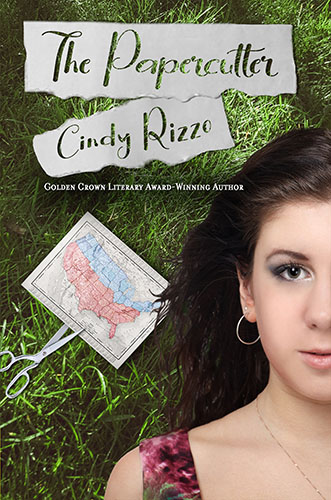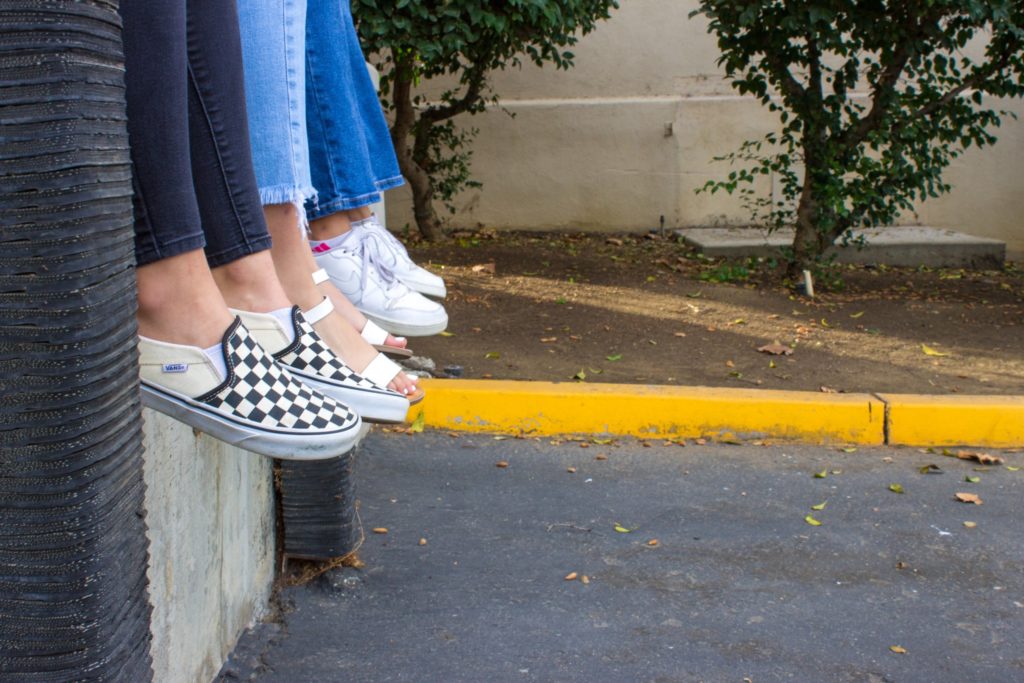The Papercutter author Cindy Rizzo discusses faith and queer awakening in her new novel
We’re so used to division now in the U.S. that it’s no longer anything we think about. Of course, the map of the country we see in the news is divided into Red and Blue, with a few states that might be Purple at least for the moment. Americans live in two, separate realities, each reinforced by the news media we consume, the books we read, and even the television shows we watch. And while we hope it’s just a passing phase, the divide seems to grow larger and deeper to the point where we begin to ask, “Can we continue as one country or should we just split in two?”
My recently released novel, The Papercutter, is my idea of what such a split might look like and what could have brought it about. Narrated by three teenagers who have come of age in this new reality–Judith and Jeffrey in the God Fearing States and Dani in the United Progressive Regions—the story explores themes of identity, friendship, love, sexuality, oppression, resistance, and, yes, faith.

All three teen narrators are Jewish—two have grown up in a strict Orthodox Jewish community and one has had little exposure to religious observance but has read everything she can get her hands on about the Holocaust, even if she doesn’t completely understand why. Jeffrey chafes against the strictures of his faith while Judith revels in its traditions and rituals. Dani is okay with being a secular Jew but is in awe of her older brother who has married into an Orthodox family and resettled in the God Fearing States.
It’s unusual for a young adult novel featuring queer teens to wrestle with issues of faith where the central issue isn’t the horrors of conversion therapy (e.g., The Miseducation of Cameron Post, Boy Erased) or the struggle to be one’s authentic self after years of homophobic religious teaching (e.g., Her Name in the Sky). In book six of her Clarksonville series, Tools of the Devil, Barbara Clanton’s main character is already out and proud but still has to reconcile issues of faith when a new pastor preaches hate from the pulpit. The one young adult novel I’ve read where the main character is able to ultimately reconcile her Orthodox Jewish identity with her sexuality is Leanne Lieberman’s Gravity.
So that leads us back to Judith Braverman, the gifted artist of The Papercutter, whose craft is religiously themed and who has no misgivings about her faith. Yet, unlike her best friend Hannah, who sets her sights on the rabbi’s son, Judith has no interest in the mating rituals of her community. While she’s relieved to find a kindred spirt in Jeffrey Schwartz, she is unnerved by his rejection of all things Jewish except for the food. Jeffrey is the more conventional queer YA character, who believes that the only way he can live openly as gay is to turn his back on the religion he’s been raised in. Although Judith rejects this false choice, she has little understanding of what her adult, Jewish life could look like.
All of this comes to a head for Judith when she’s inexplicably drawn to Dani during their short, clandestine meeting. As their stories unfold, Judith is unable to wrap her head around the fact that a girl could be Jewish but not religious, and Dani’s friends are incredulous that she would even think that anything could come of a relationship with the “religious girl.”
It’s no mystery why so many young adult novels have cast religion as the obstacle that their characters must overcome into order to be their true, queer selves. That is the experience of many LGBTQ people. But not all. More and more religious traditions are opening up to LGBTQ people, and even if the denomination itself isn’t accepting, there are usually individual churches, synagogues, mosques, temples, and other religious communities that are.
So, it is important that authors begin to explore how young people can live their authentic lives as practicing members of their faith communities.
This is the story I want to tell. It is Judith’s, Jeffrey’s and Dani’s stories. I would not be surprised if there are many others like them. I hope to read those books.


